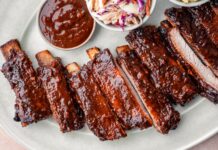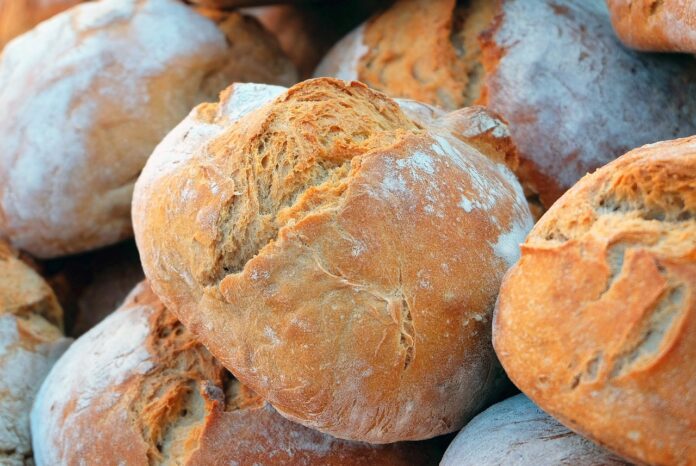
Sourdough isn’t just bread; it’s a journey into the heart of baking tradition, blending art with science. This ancient method of bread-making, cherished around the globe, has witnessed a resurgence, captivating the hearts and kitchens of culinary enthusiasts everywhere. At its core, sourdough relies on a simple mixture of flour and water, miraculously transformed by wild yeasts and bacteria into a leavening agent known as a starter.
This process doesn’t just create bread; it gives life to a unique loaf with a distinctive tangy flavor and chewy texture, unmatched by any commercial yeast bread. As we explore the world of sourdough, from starter to loaf, we delve into the complexities and joys of creating something truly magical from the most humble ingredients.
The Sourdough Starter: Birth of a Loaf
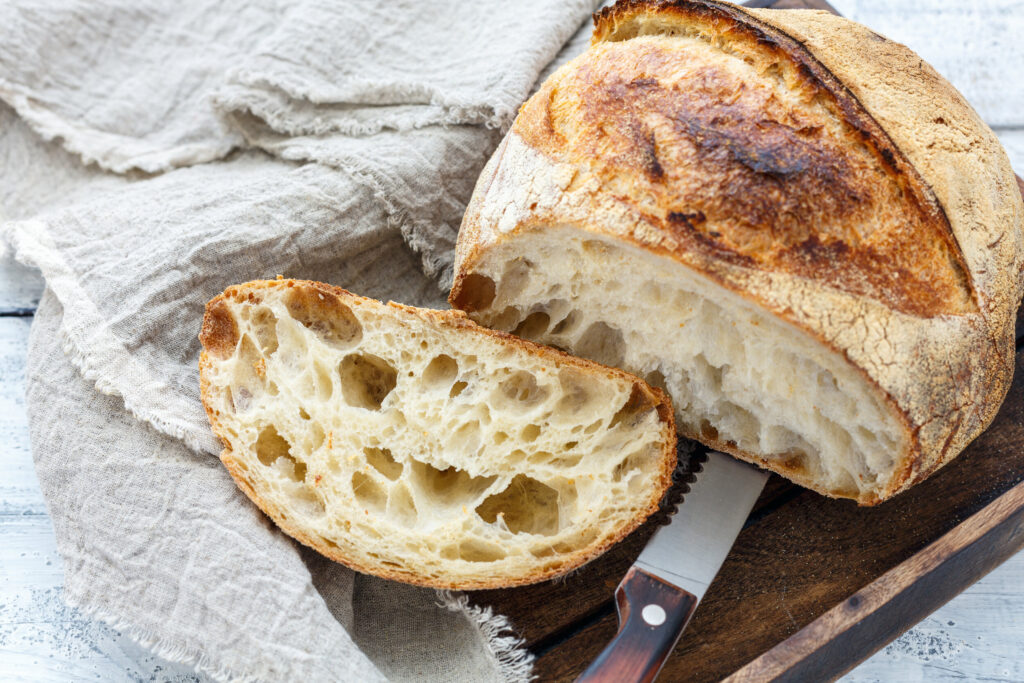
The journey of sourdough baking begins with the birth of the starter, a living, breathing entity that demands care and attention. To create a starter, you simply mix flour and water and let it sit in a warm spot. Over several days, this mixture comes alive, fermenting as wild yeast and beneficial bacteria naturally present in the flour, air, and on your hands colonize it. This is where the magic starts. The starter will bubble and grow, developing a tangy aroma that’s both complex and intoxicating. Feeding it regularly with fresh flour and water cultivates a robust community of microorganisms, setting the stage for baking.
Kneading and Shaping: Crafting the Perfect Texture
Incorporating sourdough baking into your routine unlocks a world of texture and flavor not found in traditional bread-making. Kneading and shaping the dough are critical steps that develop gluten, which gives the bread its structure and chewiness. This tactile process, deeply satisfying and meditative, connects you to the dough. You become attuned to its condition—its elasticity, moisture content, and readiness for the next stage. Properly kneaded and shaped, the dough then embarks on its final rise, a period of anticipation and transformation.
The First Rise: Cultivating Flavor and Structure
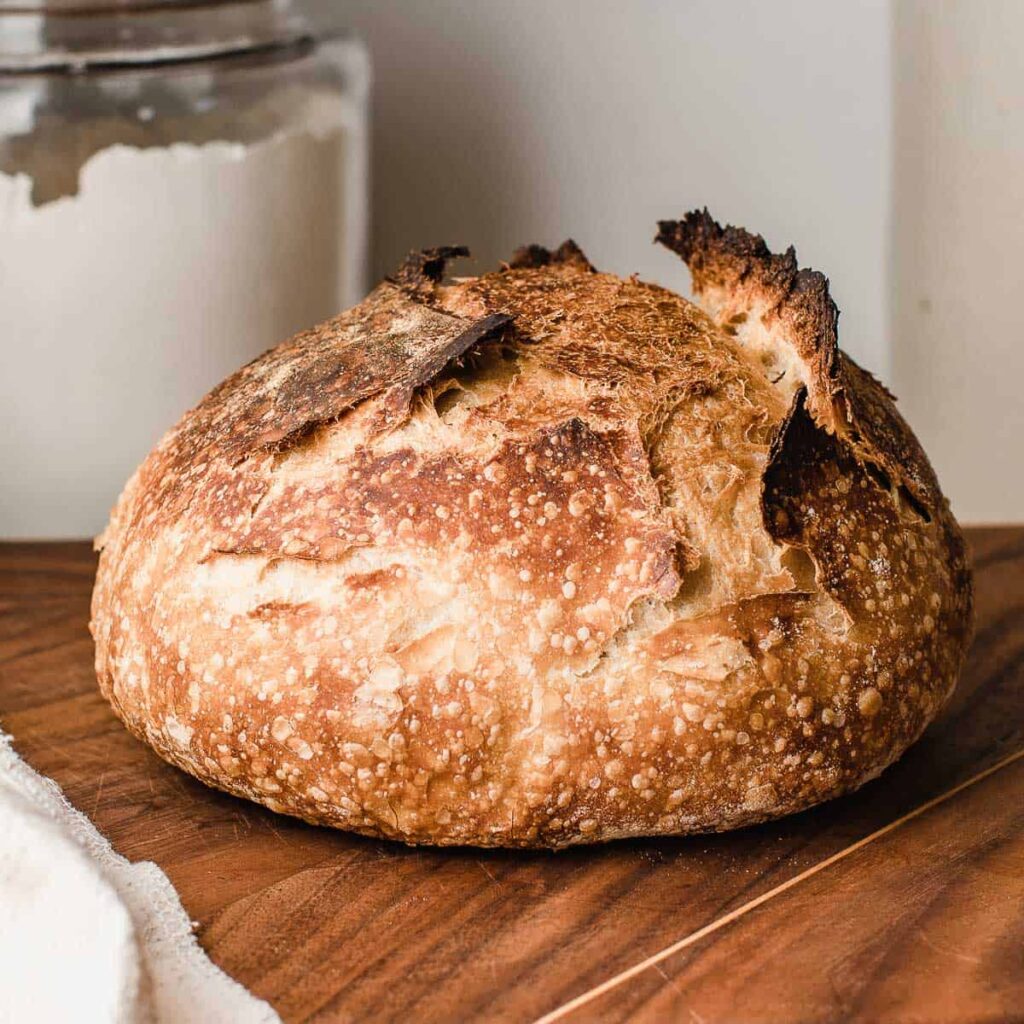
After kneading, the dough must rest. This first rise, or bulk fermentation, is crucial for developing flavor and structure. During this phase, the microorganisms in the starter feast on the flour, producing carbon dioxide, alcohol, and organic acids. These byproducts contribute to the sourdough’s signature tangy taste, airy texture, and aromatic bouquet. The dough doubles in volume, becoming airy and light, a clear sign that the sourdough is gaining the character and vitality necessary for a remarkable loaf.
Scoring and Baking: The Final Transformation
Scoring the dough before baking isn’t just for aesthetics; it controls how the bread expands in the oven. These deliberate cuts allow the dough to elegantly open up, creating patterns that are as beautiful as they are functional. Then comes the baking, a process that requires precise temperature and timing to ensure the loaf achieves its full potential. The heat of the oven springboards the final rise, crust formation, and that sought-after blistered appearance. It’s a moment of truth, where all your patience and skill culminate in the creation of a golden, crusty exterior encasing a soft, tangy interior.
Cooling and Enjoying: The Rewarding End
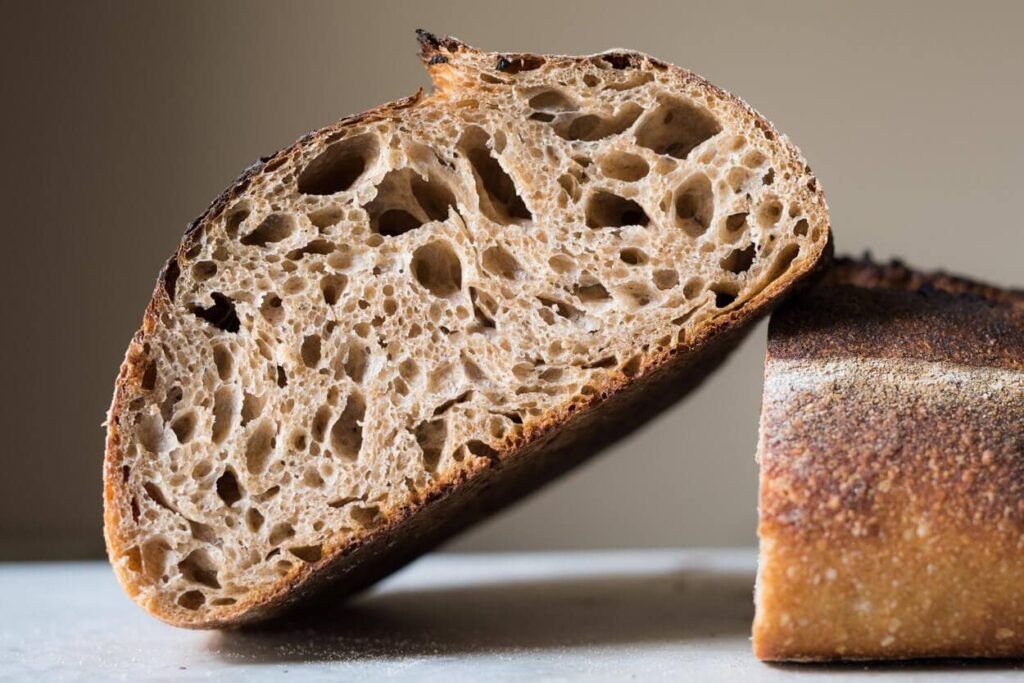
The importance of cooling cannot be overstated. Rushing to slice into the hot loaf can result in a gummy texture, as the bread is still cooking from residual heat. Allowing it to cool completely ensures the flavors mature, and the texture sets perfectly. Finally, tasting the sourdough you’ve nurtured from starter to loaf is immensely rewarding. Each bite is a testament to the care, skill, and patience required in sourdough baking—a true labor of love that brings joy with every slice.
Fine-Tuning Your Starter: The Heartbeat of Flavor
Mastering your sourdough starter is akin to understanding a complex character in a novel. With each day, it grows more dynamic, its flavors deepening and its fermentation power strengthening. The key to a vibrant starter lies in its feeding routine—regular refreshments with flour and water maintain its health and vigor. Observant bakers learn to read their starter’s cues: the bubbles that signal readiness, the aroma that hints at maturity, and the texture that indicates vitality. This intimate knowledge of your starter is fundamental, as it directly influences the bread’s taste, texture, and rise.
The Role of Flour: Selecting Your Canvas
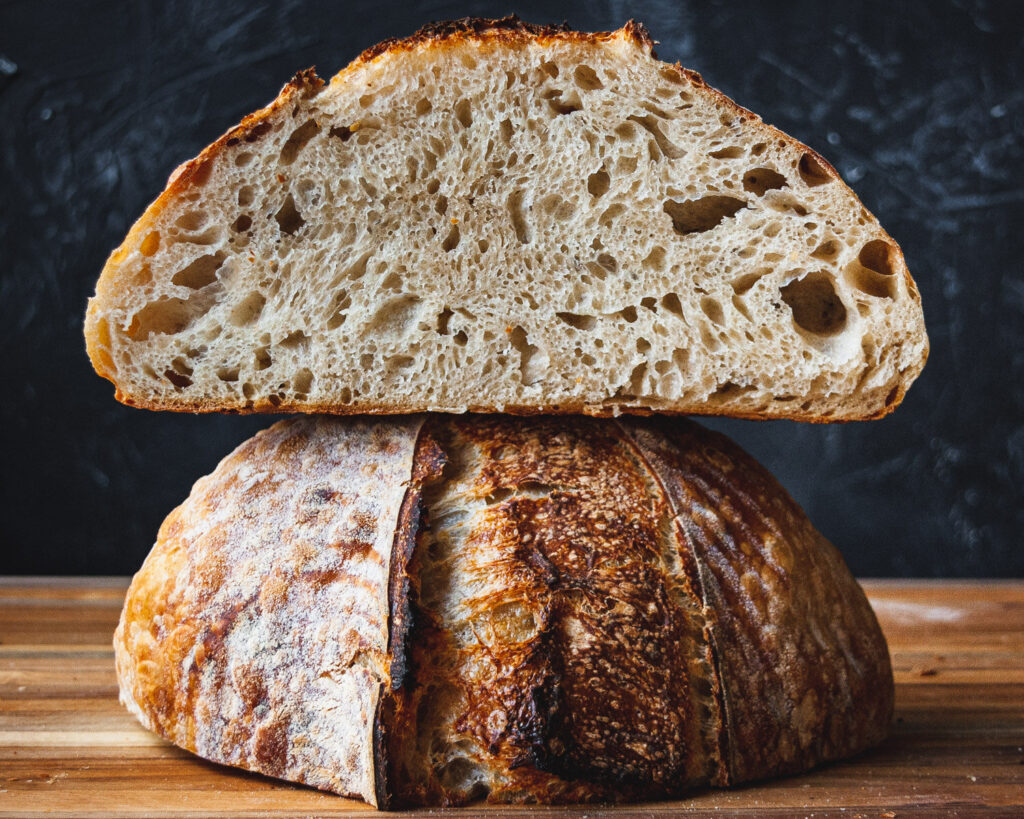
Flour isn’t just the scaffold of your sourdough; it’s the palette from which its flavors and textures are painted. Each variety—from whole wheat to rye, from white to spelt—brings its unique characteristics to the loaf. Whole grains add nuttiness and depth, while white flours offer a light, airy crumb. The choice of flour impacts hydration levels, fermentation rates, and the final flavor profile of the bread. Experimenting with different flours encourages bakers to engage deeply with their craft, understanding how each type influences the sourdough’s personality.
Hydration Wisdom: The Science of Moisture
Hydration plays a pivotal role in sourdough baking, affecting everything from dough handling to crumb structure. The water-to-flour ratio can dramatically alter the bread’s outcome, with higher hydration leading to more open, airy loaves and lower hydration resulting in denser, more manageable doughs. Balancing hydration requires a blend of science and intuition, as the baker adjusts for factors like flour type, ambient humidity, and desired texture. Mastering this balance is a milestone in any sourdough baker’s journey, unlocking the door to consistently excellent loaves.
Fermentation Finesse: Timing Your Bread’s Flavor
Fermentation is the alchemy that transforms simple ingredients into sourdough bread. The length of fermentation—both the first rise and the final proof—greatly influences the bread’s flavor, texture, and digestibility. Longer fermentations allow for more complex flavor development and a more pronounced sourness, while shorter fermentations produce milder bread. Learning to control fermentation through temperature adjustments, timing, and starter strength is a craft in itself, one that rewards patience and observation with breads of unparalleled depth.
Sourdough in Cuisine: Beyond the Loaf
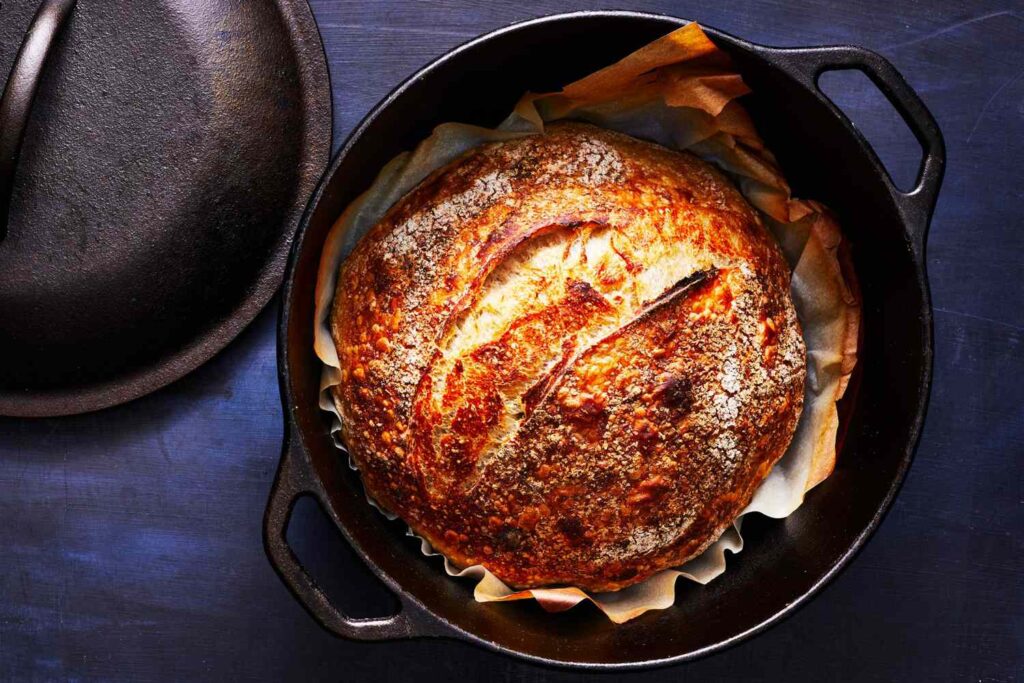
Sourdough’s versatility extends far beyond the traditional loaf, weaving its way into a variety of culinary creations. From tangy pizza crusts to fluffy pancakes, from crisp crackers to soft flatbreads, sourdough starter can be the foundation of an entire repertoire of baked goods. This adaptability not only reduces food waste by utilizing discard starter but also enriches your diet with fermented foods’ health benefits. Exploring sourdough’s potential in different recipes is both an adventure and a reflection of the baker’s creativity and skill.
Conclusion: The Endless Journey of Sourdough Mastery
Embarking on the sourdough journey is to join a tradition of artisans who find beauty in simplicity and fulfillment in the tactile process of baking. It’s a path of continual learning, where each loaf is both a culmination and a beginning. The world of sourdough is expansive, inviting bakers to explore, innovate, and share.
As we delve deeper, we discover that sourdough is more than just bread; it’s a reflection of the baker’s passion, patience, and persistence. Whether you’re nurturing your first starter or perfecting your hundredth loaf, sourdough baking remains an endlessly rewarding art, connecting us to each other and to the timeless practice of breaking bread together.



